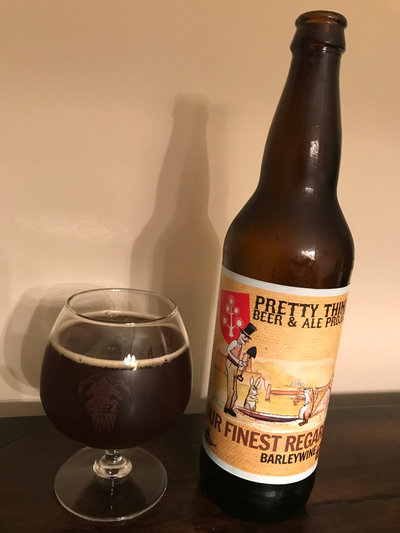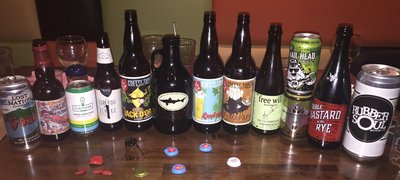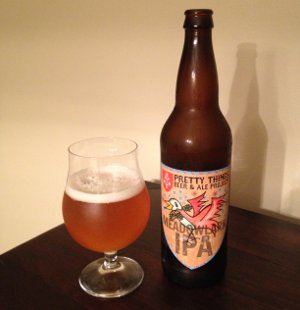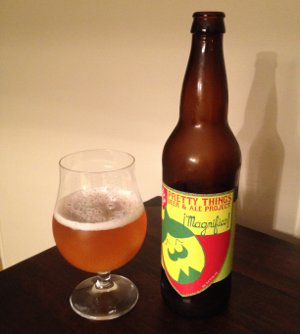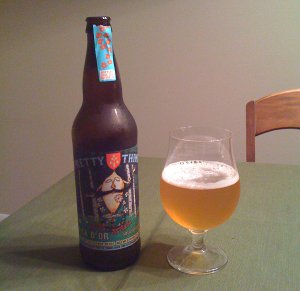So this beer is labeled as a Quadrupel. I’ve written about a few Quads on the blog, but I’ve never really written much about the style, instead just referring to it as “mildly mystifying”, which is certainly true (I’ve also said it’s a brew “which is like, 4 times better than regular beer, right?”). It’s usually referred to as a style of Trappist origin, though obviously lots of non-Trappist brewers make beers in the style. Beer Advocate describes the style thusly:
Inspired by the Trappist brewers of Belgium, a Quadrupel is a Belgian style ale of great strength with bolder flavor compared to its Dubbel and Tripel sister styles. Typically a dark creation that ranges within the deep red, brown and garnet hues. Full bodied with a rich malty palate. Phenols are usually at a moderate level. Sweet with a low bitterness yet a well perceived alcohol.
What’s more, BA lists about 150+ examples of the style, including heavyweights like Rochefort 10, Westvleteren 12, and St. Bernardus Abt 12. The weird thing about the style, though, is that it seems to date back to… 1991. That’s the year Koningshoeven (known to us Yanks these days as La Trappe), the only non-Belgian Trappist brewery, supposedly coined the term Quadrupel. The sourcing is somewhat vague about this. My meager collection of beer books has very little to say about the style. In Brew Like a Monk, Stan Hieronymus refers to it as a “style that’s not quite a style.” With the help of google books, I see a reference in The Naked Pint: An Unadulterated Guide to Craft Beer that says La Trappe/Koningshoeven’s Quad is “the beer that supposedly coined the Quadrupel name.” (Curious, that. While Quads are indeed very strong, I was not aware that they had gained the power of speech and were coining controversial style terminology.) Notorious beer history wonk Martyn Cornell takes a more measured approach:
[Koningshoeven] made Dubbel and Tripel for a long time and has “reinvented” (Tim Webb) the terms Enkel and Quadrupel to extend its beer range at either end of the strength scale. The terms double and single for different strengths of beer were used across Northern Europe: the three commonest styles of Swedish beer before the middle of the 19th century, for example, were dubbelt öl, or double ale, enkelt öl, or single ale, and svagöl, “weak ale”.
From a common sense point of view, it seems wise to acknowledge that the term “Quadruple” (and various fancy/foreign spellings of such) could have been applied to various strong beers for a long time. But it does indeed appear that Koningshoeven has succeeded in reinventing the term, as when people talk about a Quadrupel these days, they’re generally referring to the style that Koningshoeven began to brew in 1991. Of course, that does little to explain why this is a distinct and separate style from, say, a Belgian Strong Dark Ale. Indeed, the BJCP doesn’t list Quads as a style, instead classifying them under Belgian Strong Ales or Belgian Specialty Ales. Ah, the joys of pedantic style debates. Well, enough of that, let’s drink some Baby Tree, a particularly good example of the style:
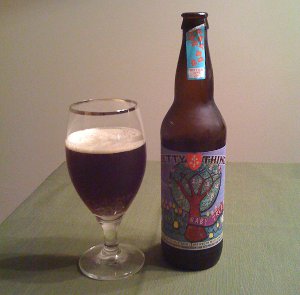
Pretty Things Baby Tree – Pours a beautiful dark amber brown color with just a bit of head that seems to persist reasonably well. The aroma is filled with dark fruitiness and sweet malts. The taste is bursting with dark fruit (apparently plums), with just a bit of spiciness to offset it. Extremely well balanced taste (generally the hallmark of a great beer for me). The mouthfeel is rich and full bodied but very smooth, making this extremely easy to drink (especially for a 9% ABV beer!) I suppose it could be a bit of a sipper… if I wasn’t gulping the stuff down so quickly because it’s so smooth and full of awesome. In reality, 9% is actually rather low for this style that isn’t a style, so I guess that makes a sort of sense. Whatever the case, the alcohol is hidden really well, and this is just an all around fantastic beer. A
Beer Nerd Details: 9% ABV bottled (22 oz. bomber). Drank out of a goblet on 10/29/11. Bottled June 2011.
Pretty Things (another of them newfangled “gypsy brewers”) are now on the list of breweries where I’ll need to seek out more of their stuff. And naturally, I want to get me some more of this particular beer as well. As for other Quads, I will say that it’s among my favorite styles, so expect to see some more of them (or, at least, Belgian Strong Darks, which seem to be popular this time of year). I think I may even have a line on a bottle of the fabled Westy 12!
